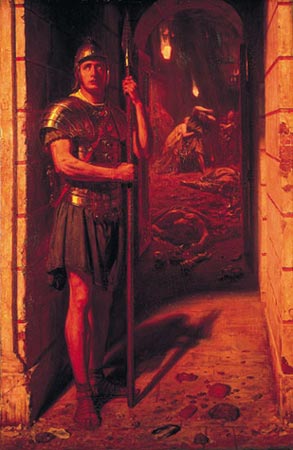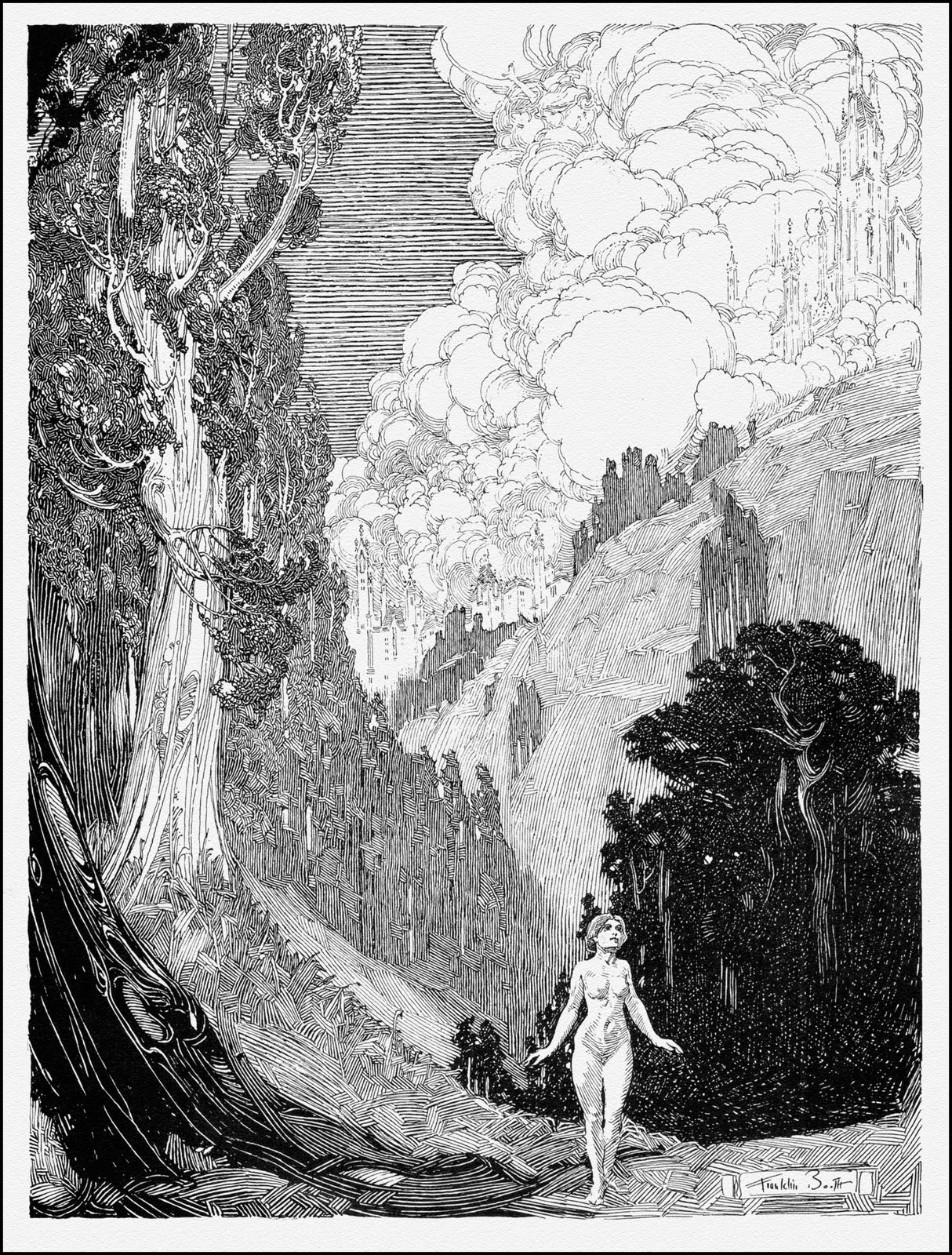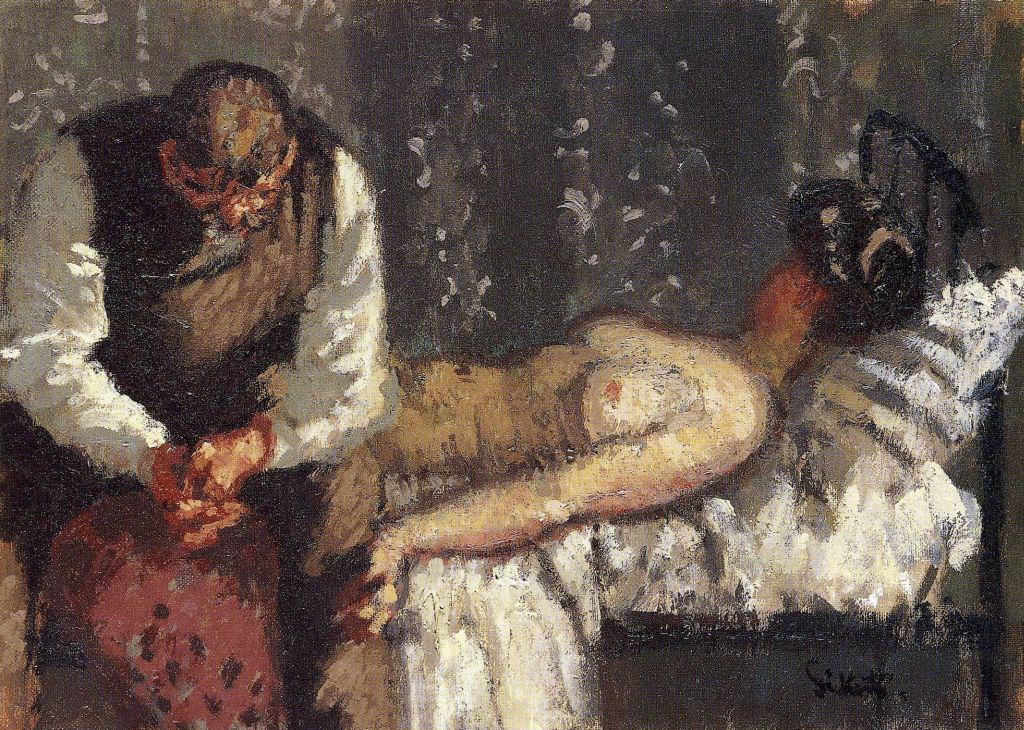This is Edward Poynter’s Faithful unto death (1865, Oil on canvas, 61″ x 29 3/4″), a piece of art that is not only is a strong image, but shows an accurate and interesting historical uniqueness.
Many of Poynter’s works are historical, and this was one of his very first ones. The scene has been said to be based on Edward Bulwer-Lytton’s book The Last Days of Pompeii, which was a very influential book in the Victorian age. On top of that, the Pompeii site was a fairly recent find, and one that was very interesting to the times.
In the image, the lone Roman soldier stands at his post, and despite the fear and concern on his face will not abandon his post. Even as the people behind him in the courtyard are dying, and coins and purses and other valuables lie at his feet, he stands his ground, ever faithful to the end.
Poynter’s attention to historical accuracy was imitated and copied often, especially after this image was shown. Remains of Roman armor were found at Pompeii, often in a doorway or hall, and Poynter grabbed that idea of utter devotion and ran with it.
I like the colors and tones Poynter used here. Nothing is at all bright, and the red colors, like horror brought to life, are infused in everything. There is no question that this is an image of the end, of an armageddon, and yet Poynter manages to give the soldier real emotion. His face shows fear and concern, and even understanding. But the strength in his arms, the stance and the way he holds on tight to the spear shows that he isn’t going to leave, even if it means his life.
This is one of those pieces that looks great, and you could spend a lot of time with the details, but also gives such a strong sense of story and in this case of history. Poynter shows the great strength of the soldier and of the Roman army, and with the people in the background and the setting of the image shows that destruction has come. To me he’s saying that when the end comes, no matter how overwhelming, to stand your ground.
Opinions?
Russ


